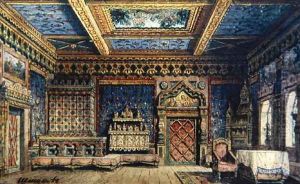Matvey Andreyevich Shishkov Paintings
Matvey Andreyevich Shishkov was a Russian painter, associated with the Mir Iskusstva (World of Art) movement, which was a Russian cultural movement and publication that played an important role in the development of Russian art in the late 19th and early 20th centuries. Born on November 29, 1892, in the Russian Empire, Shishkov was active during a tumultuous time in Russian history, which saw the end of the Tsarist regime, World War I, the Russian Revolution, and the rise of the Soviet Union.
Shishkov's artistic journey began in the Imperial Academy of Arts in Saint Petersburg, where he studied under the guidance of prominent Russian artists of the time. His style was influenced by the Art Nouveau movement and the Russian avant-garde, which sought to break away from the classical traditions and embraced innovation and abstract ideas. Shishkov's work reflected the artistic experimentation of the era, incorporating elements of symbolism and impressionism.
The artist's career evolved alongside significant historical events. The Russian Revolution of 1917 and the subsequent civil war that brought about the establishment of the Soviet Union had a profound impact on the arts. During the early Soviet period, there was a period of relative freedom known as the 'Silver Age' of Russian art, during which artists like Shishkov were able to explore and develop their styles.
However, as the Soviet regime consolidated its power, it began to impose stricter controls on artistic expression, promoting the style of socialist realism and marginalizing other forms of art. This shift affected Shishkov's career as his style did not align with the prescribed aesthetic of the state. Despite this, he continued to work and adapt to the changing cultural landscape of the Soviet Union.
Matvey Andreyevich Shishkov's life and career were cut short by the Second World War. He died on December 15, 1942, during the Siege of Leningrad, one of the longest and most destructive sieges in history, and a major tragic event of World War II. Shishkov's legacy as an artist is tied to the rich tapestry of Russian art history, embodying the spirit of an era that sought to redefine the boundaries of artistic expression.



